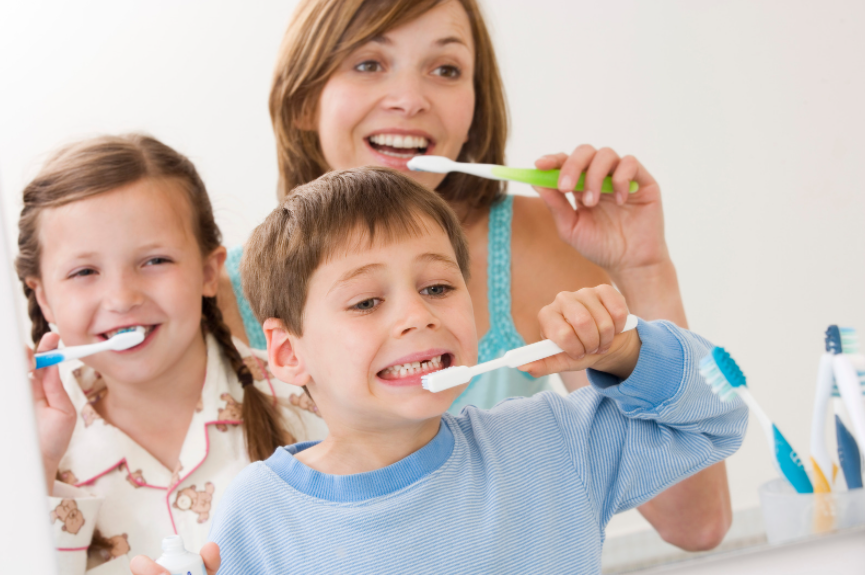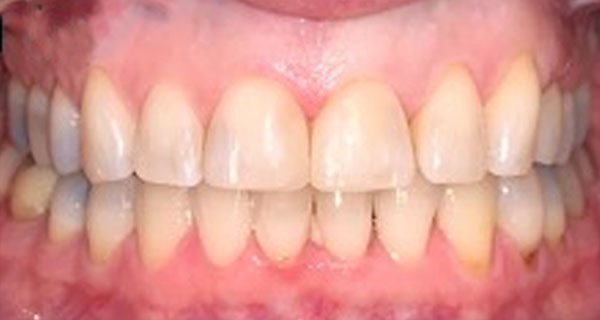We all know that caring for your children’s teeth is of primary importance. After all, it is their teeth that will be doing the hard work of chewing, developing speech and smiling.
But how do we ensure that our children’s pearly whites remain healthy and radiant?
Below we’ll go through essential oral care tips for your child as they grow through the different ages for maintaining good dental health.
Understanding Tooth Development in Children
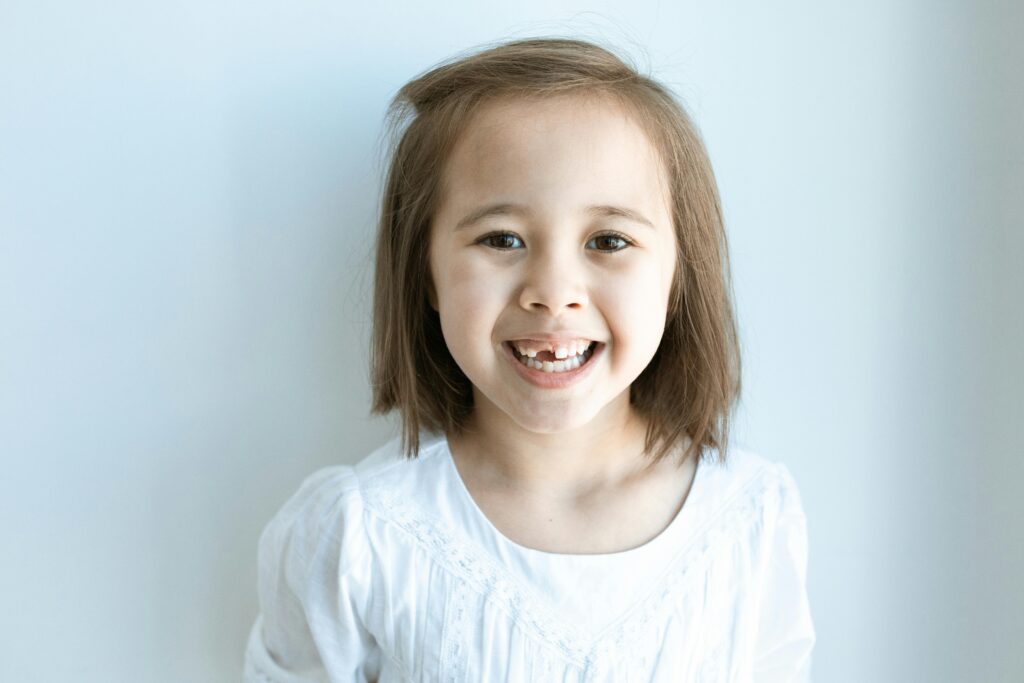
Did you know that teeth begin to form in your child even before birth?
During the second trimester of pregnancy, primary (or baby) teeth start developing. These teeth typically begin to appear around six months after birth.
By the age of three, most children will have a complete set of 20 primary teeth, which are essential for speech development and proper chewing.
Around six years old, children start to lose their primary teeth, making room for permanent teeth. This process continues into early adolescence, culminating with the emergence of wisdom teeth, bringing the total to 32 permanent teeth.
Best Practices for Good Dental Health
Good oral hygiene begins early. Before your child’s first tooth appears, it’s important to gently clean their mouth and gums.
After the first tooth emerges, use a soft-bristled toothbrush and water for brushing twice daily.
At 18 months, you can introduce a pea-sized amount of low-fluoride toothpaste. Supervise your child’s brushing to ensure they learn proper techniques.
Tips for Effective Teeth Brushing
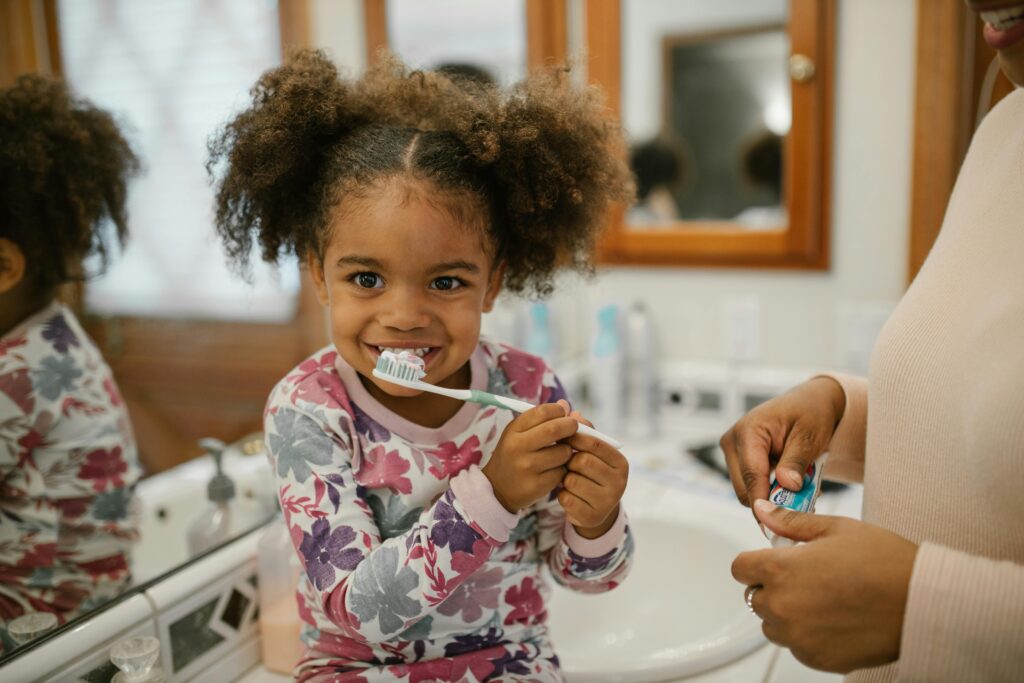
Establishing good oral hygiene habits from an early age is crucial for maintaining healthy teeth and gums.
Here are some tips for brushing your child’s teeth:
1.Start early
Before the first tooth appears, it is good to clean your little one’s mouth and gums by wiping with a soft cloth. Once their first tooth appears, it is time to begin brushing. Use a soft-bristled toothbrush and plain tap water and brush twice a day. Once your little one turns 18 months old, you can now add a pea-sized amount of low-fluoride toothpaste (suitable for their age) and encourage them to spit out the toothpaste, not swallow and not rinse.
2. Lead by example
Children often mimic what their parents do, so make brushing a family affair. Let your child observe you brushing your teeth and make it a fun and enjoyable experience. Giving your child a toothbrush to play with or to brush their teddies teeth can help.
3. Gentle technique
Use gentle, circular motions to brush your child’s teeth and gums. Pay attention to all surfaces of the teeth, including the front, back, and chewing surfaces.
4. Time matters
Brush your child’s teeth for approximately two minutes, twice a day. You can make this more engaging by singing a song or using a timer.
5. Don’t forget the dentist
Regular dental check-ups are essential for monitoring your child’s oral health, every 6-12 months even if they don’t appear to have any problems. Visiting the dentist regularly can help with prevention, early detection, and management of tooth decay.
Tooth brushing Tips According To Age
| Age Group |
Toothbrushing Tips |
| 0-2 |
Start cleaning the baby’s gums with a soft cloth or a baby gum brush before the first tooth appears. |
|
Once teeth appear, use a soft-bristled toothbrush with water to gently brush teeth. |
|
Avoid using toothpaste until the child is 18 months old, unless advised by a dentist. |
| 3-6 |
Introduce a pea-sized amount of low-fluoride toothpaste at 18 months. |
|
Supervise brushing to ensure children use the correct technique and do not swallow toothpaste. |
|
Brush twice daily, focusing on all surfaces of the teeth and the gum line. |
| 7 and above |
Children should brush their teeth twice a day with fluoride toothpaste under parental supervision until 8. |
|
Teach flossing techniques as more teeth fill in and there is less space between them. |
|
Encourage independence in brushing while still monitoring their technique for thorough cleaning. |
When to Visit a Dentist
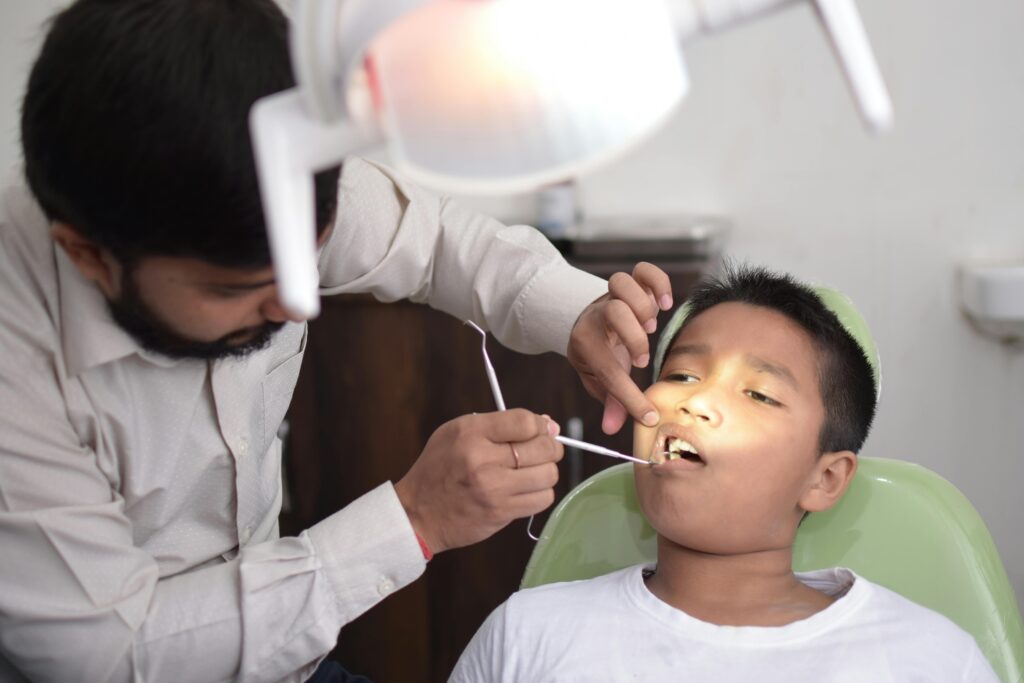
Schedule your child’s first dental check-up around their first birthday. Regular visits, ideally every six to twelve months, are crucial to monitor and maintain oral health, allowing for the prevention and early management of potential issues.
Managing Tooth Pain in Children
Tooth pain can be distressing for both children and parents. If your child experiences tooth pain, here are some steps you can take:
Rinse with a warm saltwater wash: This is an effective first-line treatment as salt kills bacteria and the warm water eases discomfort and reduces gum swelling. Take a glass of warm water, mix in half a teaspoon of salt, and use the mixture as a mouthwash.
Apply a cold compress. Applying an ice pack or cold compress on your child’s outer cheek near the affected area will help relieve pain by constricting blood vessels and reducing swelling and inflammation. Hold the compress on the painful area for 20 minutes and repeat every few hours.
Gently floss: Sometimes, tooth pain can be caused by food particles stuck between teeth. Gently floss the affected area to remove any debris.
Over-the-counter pain relief: Panadol or Ibuprofen, appropriate for your child’s age and weight, can help relieve mild tooth pain. Always consult with your child’s paediatrician or dentist before giving any medication.
Contact the dentist: Tooth pain in children isn’t always a dental emergency, but it is typically something that should be treated by a dentist. Keep your child comfortable until they can be seen but be sure to schedule an appointment. They will be able to identify the underlying cause of the pain and provide appropriate treatment.
If your child has any severe symptoms, finding emergency paediatric dental care should be your top priority. You can call one of our clinics and speak to our receptionist regarding an emergency appointment if needed.
Encouraging Good Dental Health
As a parent, you are a key player in your child’s oral health. Adhere to these practices to promote strong, healthy teeth and instil lifelong dental habits. Consider scheduling a dental visit to ensure your child’s dental health is on the right track for a bright and confident smile.
Learn More About Expert Child Dental Care at Smile Place
For more tailored advice and professional dental care, learn more about our child dental services. Our experienced and caring team is here to support every step of your child’s dental health journey.
FAQs – Children’s Dental Care
1. When should I start cleaning my baby’s mouth?
Start cleaning your baby’s gums with a soft, damp cloth before their first tooth appears. This helps establish good oral hygiene habits from the very beginning and prepares them for toothbrushing.
2. What’s the right age to introduce toothpaste, and how much should I use?
Introduce a pea-sized amount of low-fluoride toothpaste when your child is about 18 months old. Ensure they use only a small amount to minimise the risk if they swallow some, and encourage them to spit out the toothpaste after brushing.
3. How often should children visit the dentist?
Schedule your child’s first dental check-up around their first birthday. After that, regular dental visits should occur every six to twelve months, unless the dentist suggests otherwise based on specific needs or issues.
4. How do I manage tooth pain in my child before we can see the dentist?
For immediate relief, rinse your child’s mouth with a warm saltwater solution, apply a cold compress to reduce swelling, or gently floss to remove trapped food particles. Over-the-counter pain relief appropriate for your child’s age can also be used after consulting a healthcare professional.
5. How can I make tooth brushing fun for my child?
Turn toothbrushing into a game, sing songs, or let your child choose their own toothbrush and toothpaste with their favourite characters. Demonstrating brushing your teeth as a fun activity for yourself can also encourage them to mimic and enjoy the process.
6. What should I do if my child is reluctant to brush their teeth?
Addressing reluctance can involve several strategies: let them pick out their toothbrush, use toothpaste that tastes appealing to children, brush together as a family, and praise them for a good brushing session. Sometimes, explaining the benefits of brushing in simple terms can also help motivate them.
